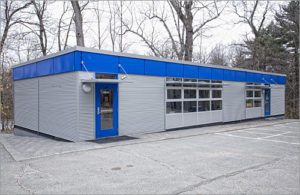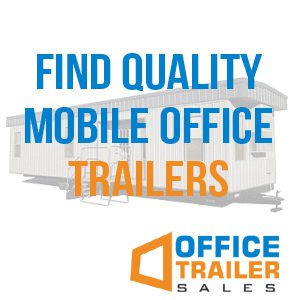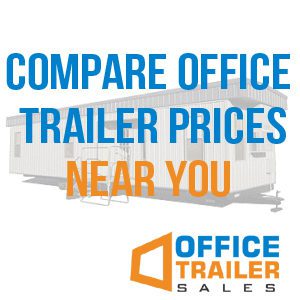
Modular Classrooms: Cost-Effective and Sustainable Solutions for Expanding Educational Spaces
As educational institutions grapple with limited budgets, growing enrollment, and the need for sustainable building practices, modular classrooms have emerged as a popular solution. In this blog post, we’ll explore the cost-effective and eco-friendly advantages of modular classrooms, as well as their potential to revolutionize the way schools plan and manage their facilities.
The Growing Demand for Modular Classrooms
Schools and universities face a range of challenges, including:
- Overcrowding: Rising enrollment numbers can lead to overcrowded classrooms, which can negatively impact student learning and teacher effectiveness.
- Aging infrastructure: Many educational facilities have outdated buildings that require costly repairs or replacement.
- Limited budgets: Educational institutions often struggle with limited funding, making it difficult to invest in new construction or renovations.
Modular classrooms offer a solution to these challenges by providing flexible, cost-effective, and environmentally-friendly options for expanding educational spaces.
Understanding Modular Classrooms
Modular classrooms, also known as portable or prefabricated classrooms, are constructed off-site in a factory setting and then transported to the school campus. These structures are built using modular construction techniques, which involve assembling individual units or modules to create a complete building.


Key Benefits of Modular Classrooms
There are several advantages to using modular classrooms:
- Cost-effective: Modular construction is generally less expensive than traditional construction methods due to reduced labor costs, bulk material purchasing, and the ability to reuse materials.
- Faster construction: Since modular classrooms are built off-site, construction can occur simultaneously with site preparation, reducing the overall project timeline.
- Flexibility: Modular classrooms can be easily relocated, expanded, or reconfigured to adapt to changing needs.
- Eco-friendly: Modular construction produces less waste and has a smaller environmental footprint compared to traditional buildings.
How Modular Classrooms Save Money
The cost savings associated with modular classrooms can be attributed to several factors:
- Reduced labor costs: Modular construction requires fewer labor hours, as the controlled factory environment allows for streamlined production and assembly processes.
- Bulk material purchasing: Manufacturers can purchase materials in bulk, reducing the overall cost of construction.
- Less waste: Modular construction generates less waste, as materials are pre-cut and measured, minimizing errors and excess materials.
- Shorter construction timeline: Faster construction times can lead to cost savings in labor and reduced time spent on-site.


Embracing Sustainability with Modular Classrooms
Modular classrooms are not only cost-effective but also eco-friendly. Here are some of the sustainable features of modular construction:
- Energy efficiency: Modular classrooms can be designed with energy-efficient materials and technologies, such as insulated walls, double-glazed windows, and energy-efficient HVAC systems.
- Reduced waste: As mentioned earlier, modular construction generates less waste due to precise measurements and pre-cut materials.
- Recyclable materials: Many modular classrooms are constructed using recyclable materials, which can be repurposed at the end of their lifespan.
- Minimal site disturbance: Since most of the construction occurs off-site, modular classrooms cause less disruption to the environment during the installation process.
A Smart Solution for Expanding Educational Spaces
Modular classrooms offer a viable, cost-effective, and sustainable solution for addressing the challenges faced by educational institutions. By embracing this innovative approach, schools, and universities can create flexible, energy-efficient learning spaces that adapt to their changing needs while minimizing their environmental impact.
The Cost of Buying Modular Classrooms
When considering the cost of buying modular classrooms, it’s essential to take into account factors such as size, materials, customization, and transportation. In this section, we’ll break down the costs associated with purchasing modular classrooms and provide some guidelines to help you estimate your project’s overall expenses.
Factors Affecting the Cost of Modular Classrooms
- Size: The size of the modular classroom will directly impact the cost. Larger classrooms require more materials and labor, which will increase the overall price.
- Materials: The materials used in the construction of the modular classroom can also affect the cost. High-quality, durable materials may come with a higher price tag, but they can provide long-term benefits, such as energy efficiency and reduced maintenance costs.
- Customization: Customizing your modular classroom to include unique features or designs can increase the overall cost. Some customization options may include specialized HVAC systems, upgraded finishes, or custom floor plans.
- Transportation: The cost of transporting the modular classroom from the factory to your school’s location can vary depending on the distance and any special requirements, such as permits or escort vehicles.


Estimated Costs of Modular Classrooms
The cost of buying a modular classroom can range widely depending on the factors mentioned above. On average, you can expect to pay between $50 and $150 per square foot for a basic modular classroom. This cost includes materials, labor, and transportation. However, keep in mind that customization options, site preparation, and additional features will increase the overall cost.
For a more accurate estimate, consider the following examples:
- A 900-square-foot modular classroom with basic finishes and features may cost between $45,000 and $135,000.
- A 1,500-square-foot modular classroom with upgraded finishes and custom features may cost between $75,000 and $225,000.
These estimates are provided as a general guideline and may vary based on your specific project requirements.
Additional Costs to Consider
In addition to the cost of the modular classroom itself, you’ll also need to budget for site preparation, utility connections, permits, and any required site improvements. These costs can vary greatly depending on your school’s location and the specific requirements of your project.
When planning your modular classroom project, it’s crucial to obtain accurate quotes from multiple manufacturers and contractors to ensure you’re getting the best value for your investment.
Budgeting for Your Modular Classroom Project
Modular classrooms offer a cost-effective and sustainable solution for expanding educational spaces. By understanding the factors that affect the cost of buying modular classrooms and considering the additional expenses associated with site preparation and customization, you can make informed decisions that fit your budget and meet your school’s needs. Remember to obtain multiple quotes and research reputable manufacturers to ensure you get the best value for your investment.

Leave a Reply